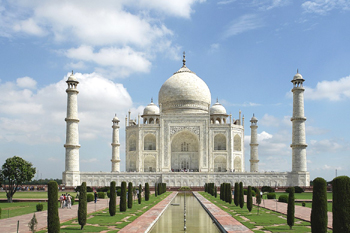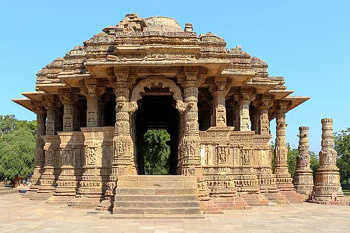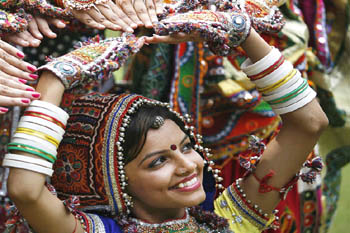About
Gujarat Tribal Tour
Duration : 13 Days / 12 Nights
Attractions : Raj Ghat - Jama Masjid - Red Fort - Sikandra - Taj Mahal - Agra Fort - Bharwadi Live - Stepwell Museum - Sun Temple - Patan's Patola Weavers - Banjara - A Melting Pot of Tribes
Day 01 : Delhi
Arrive at Delhi, received upon arrival and straight drive to hotel. Night stay at Delhi.
Day 02: Delhi
Delhi - Breakfast at hotel.
Proceed for day tour of Old & New Delhi.
OLD DELHI - We will go for sightseeing tour of Old Delhi that includes visiting the Raj Ghat - the memorial site where Mahatma Gandhi was cremated; Jama Masjid - the largest mosque in India and the Red Fort - once the most opulent fort and palace of the Moghul Empire.
A cycle rickshaw ride from Jama Masjid to Chandni Chowk.
NEW DELHI - An elaborate sightseeing tour of New Delhi that includes a visit to the Humayun's Tomb, the Qutub Minar, a drive along the ceremonial avenue - Rajpath. Other attractions that are part of the tour are the imposing India Gate, the grand Parliament House, the President's Residence and the tour ends with a drive through the diplomatic enclave. Evening will be at leisure. Overnight Delhi.
Day 03 : Delhi - Agra - Delhi
Delhi - Agra - By road covering 201 km in 4hr.
Proceed by roadways for Agra after breakfast. ENROUTE VISIT SIKANDRA.
Reach Agra and check into hotel.
Agra was established by Badal Singh in 1475. Agra also known as the city of Taj, finds mention in the Mahabharat as Agraban. This city was considered as the sister city of Mathura in those days, which was more prominent than Agraban. Agra situated near river Yamuna was chosen as the capital city by the Lodhi Kings. Sikander Lodhi made Agra his capital but Babar defeated the Lodhis to capture not only Agra but also laid the foundation of the Mughal empire.
As Baber arrived here, the golden era of Agra started and it attained zenith during the reign of Akbar, Jehangir and Shah Jahan. It was during Akbar's period that Agra became the center of art, culture and commerce and learning. This trend achieved its peak when Shah Jahan became the ruler.
From mid 16th century to earlier 17th century, Agra witnessed a frantic building activity and it was during this time when the symbol of love Taj Mahal was built. Mughals build high quality and contemporary style buildings during this era. The same is still reflected in whatever monuments remain in Agra. The narrow lanes of Agra filled with aroma of Mughlai cuisine, the craftsman who are busy in crating master pieces with their skill all remind of the Mughal royalty which this city had once experienced. Today the remains left in Agra have become a major tourist attractions, attracting innumerable tourists to this major tourist destination of India.
Now move further for sightseeing.
Visit the TAJ MAHAL - Its construction started by 1631 AD and ended by 1651 AD. It was built by Shah Jahan and is known as one of the Seven Wonders of the World. Taj Mahal is popularly known as the symbol of Love and was built in the memory of Mumtaz Mahal (Shah Jahan' s second Wife).
AGRA FORT - Agra fort was built by the famed Mughal emperor Akbar in 1565 AD, the fort is predominantly of red sandstone. Ensconced within is the picture perfect Pearl Mosque, which is a major tourist attraction.
In the evening drive back to Delhi and spend the night at Delhi.
Day 04:
Reach Ahmedabad by flight and then drive to Utelia, a feudal village clustered around a medieval palace. Stay overnight in Hotel.
Day 05 : The Bharwad
Most people in Bharwad are shepherds and cattlemen. There are no wanderers any more, most Bharwadi live in villages, painting their houses primarily in blues, greens and white. Some Bharwadi have taken professions like, the polishing and cutting of diamonds is one. We will be able to photograph the steps that turn a handful of dull looking opaque lumps into sparkling gems. We can go for to the local camel-breeding farm, where we can explore the business of producing the finest stock of camels.
Day 06 : A Stepwell & Sun Temple
For a journey into the past, drive to Balaram. There will be three major stops: a museum, a stepwell (baoli), and a sun temple. The Calico Museum is one of the most riveting museums in all of Gujarat and houses an extensive array of tribal fabrics, both modern and antique, wall hangings, tapestries, and costumes. Adalaj Wav (built in 1499) is the most famous of the Gujarati baolis (step-wells). These enticing creations were constructed by royal families as a means of ensuring a source of water throughout the year and as a place of escape from the fierce Gujarati summers. The majestic walls have been adorned with carvings of flowers and birds, and at the bottom of the five story-deep well, is a small pool of water. The Modhera Sun Temple was build in the reign of King Bhimdev I (1027/27) and is said to resemble the famous Konark temple in Orissa. Like Adalaj Wav, Modheras granite austerity is relieved by the slight of brightly-clad locals walking around the complex. (Balaram Palace Resort, 3 nights).
Day 07 : The Gowala & The Garacia
The Gowala and Garacia tribes are second cousins to each other, they differ only in the manner of living; the Gowala are more settled, the Garacia are still prone to roaming, and their women dress in a manner slightly less flaunty than the Gowala females. The homes of these tribals are among the hills that separate Gujarat from Rajasthan and they are primarily sheepherders. On one evening we will enjoy a private performance of tribal dances.
Day 08 : Patan's Patola Weavers and The Rani-ki-Vav
Patola is an intricate form of double ikat weaving that is so difficult and demanding that one sari can take up to six months to complete, this art today is practiced only by three families. All these three families live near Gujarat's oldest baoli, the 11th-century Rani-ki-vav. We will then visit one of the families, and explore the stepwell during our drive into the little Rann of Kutch. (Desert Courser Camp, 3 nights).
Day 09 : The Banjara and The Rabari
The little Rann of Kutch separates Kutch from the rest of Gujarat. This area is comprised of marshy salt flats and inhospitable terrain. Flamingos breed in the shallow lake areas and the last remaining khurs (Asiatic wild asses) live in a protected sanctuary. Travel the Rabari, on of the most nomadic of tribes of Gujarat, constantly searching for better grazing ground for their camels and sheep. Other tribes that have settled here, include the Banjara, who make their living from cattle, and whose female members are famous for their embroidery.
Day 10 : Into The Rann of Kutch:
Today, we lead westward into the bleak countryside of Kutch, Gujarat's last frontier. Today there wont be any scheduled stops as we head toward Bhuj, the regions capital. This, fortunately, is the season when the Rabari migrate, so its possible our journey may be enlivened by meeting a group of them along the way. (Prince Hotel, 4 nights).
Day 11-12 : A Melting Pot of Tribes
There are many tribes whom we can meet and photograph over the next four days, some of them are Megwar, Samma, Jat, Mutwa, Ahir and Rabari. We make daily excursions into the barren and inhospitable landscape that is the Great Rann of Kutch. We will also spend some time at Bhuj, which was partially destroyed by the earthquake that struck in January 2001. We will tour the old City (via motor rickshaws) watching, among other places, the Aina (Old) and Prag (New) mahals (palaces) and visit the Bhartiya Folk Museum with its exhibits related to local tribal life. We also visit an artist who is one of only three people continuing to paint in the Rogan style.
Day 13 : Homeward Bound
On Saturday morning we fly from Bhuj to Bombay. Upon arrival, we are moved to our hotel. In the late evening, drive to the airport for onward flights.




